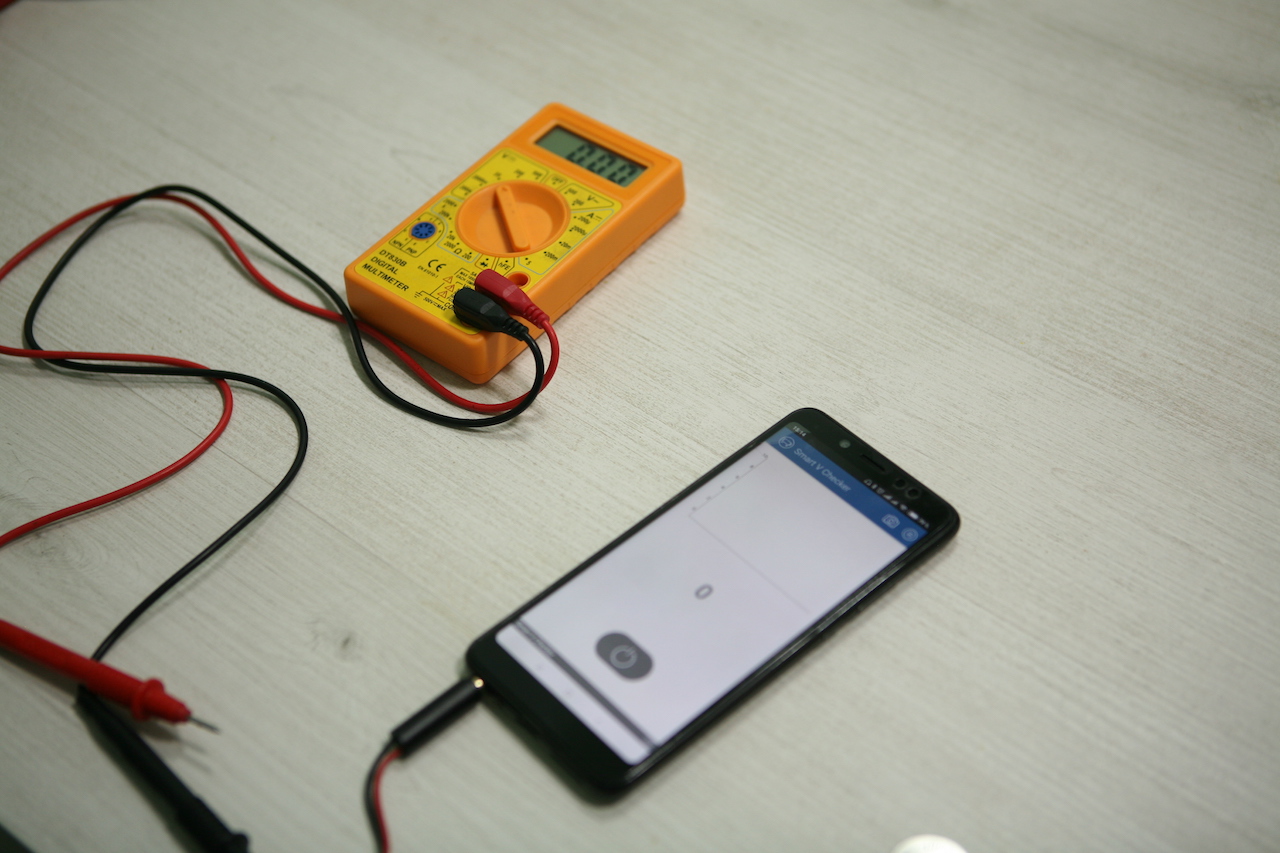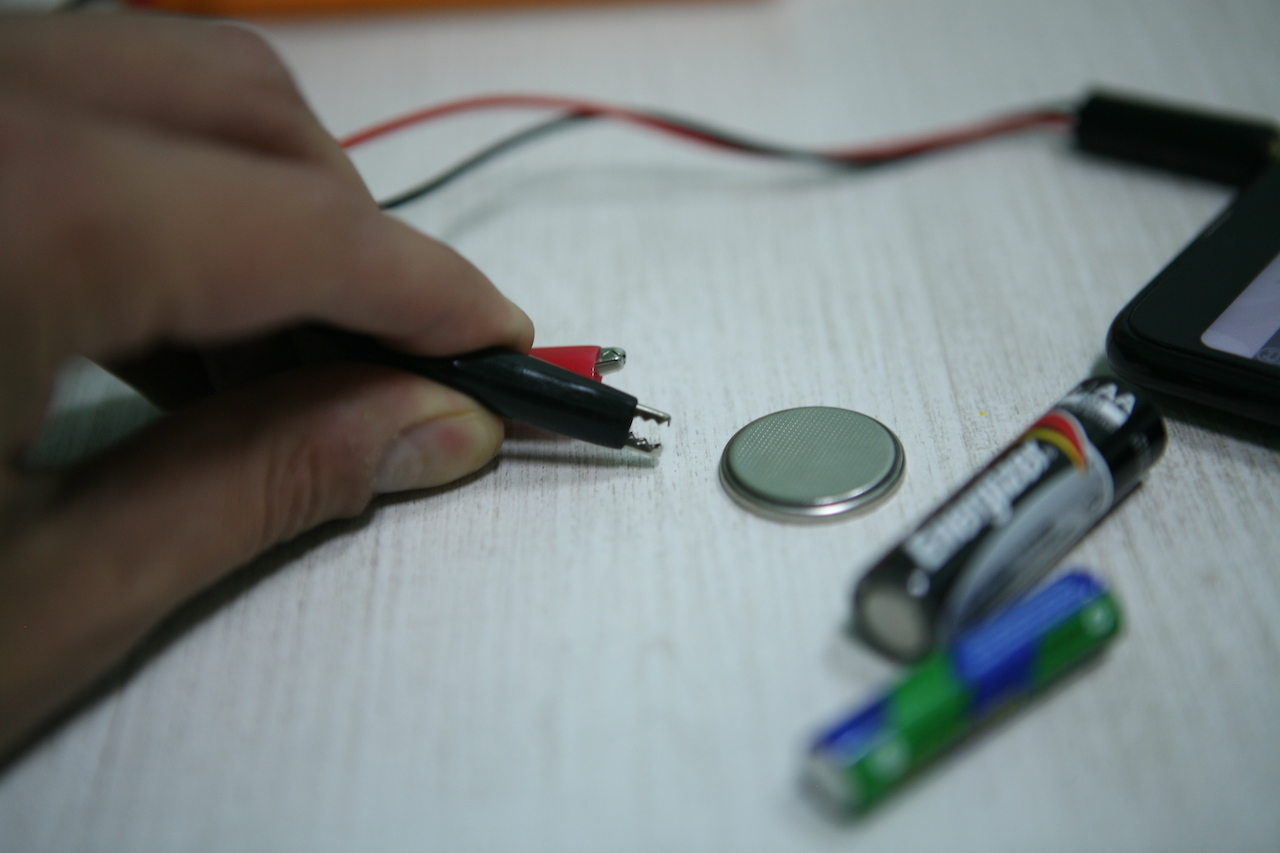Voltmeter for batteries: a pocket gadget for a smartphone with crocodiles
FTlab is known in many ways as a manufacturer of mobile semiconductor sensors with a Jack connector, each of which determines either the level of ultraviolet radiation, or temperature and humidity, or electromagnetic radiation, and even the level of radiation.
The devices have a rather limited applicability due to their characteristics, and are rather something of a toy for a geek, but nevertheless they work for themselves within the stated features.

With all their limited capabilities, miniature sensors “spread out” across different sites from Amazon to Aliexpress , and not bypassing domestic online stores . At the same time, the price is surprising - 30-40-50 USD per unit.
Voltmeter
Voltmeter - just one of the sensors. It is designed to test DC, but the device is pushed into the narrow confines: 0 ~ 10V . This makes it almost "toy", or, as rendered in the title - a gadget for testing batteries.

It does, however, quite accurately in comparison with more “qualified” devices:



True, the error within the stated figures (± 0.05V) is observed.
How does it work
To work with the device, you need an application: you can download your own for each sensor, but there is one that allows you to work with all devices at once ( Android | IOS ).

Next, it is recommended to unscrew the volume to full and eliminate unnecessary interference by placing the smartphone in flight mode. The sensor is connected via Jack (and now the owners of the seventh iPhone, of course, are very sorry ).

After that, the ends of the crocodiles must be attached to the measured object and press the "Start" button on the display.

The advantage of this device is that there is no built-in battery here: it receives power from the smartphone. Not discharged, will not fail. From their counterparts in the category, other " smart checkers", it differs only in the form:

Most of them are just small" pins "; here we also have two wires with crocodiles at the end of the sensor. This makes it a little less convenient + more unreliable (the wire can be hooked, broken)

However, it’s also impossible to say that everything is somehow here and on snot: it is soldered pretty well, and you can wear it in a box in which it is sold.
Of the obvious drawbacks:
Despite the fact that the headphone jack will still be relevant for smartphones for some time, everything is likely in the future. The company is already duplicating some of its devices with a wireless connection ( for example ), but they have not yet been seen on the domestic market.
Of the benefits:
Like any portable device, this thing gives some of its possibilities to its owner, but at the same time imposes a number of restrictions. In general - a fair alignment. There is such a "toy" and a half thousand rubles.
The devices have a rather limited applicability due to their characteristics, and are rather something of a toy for a geek, but nevertheless they work for themselves within the stated features.

With all their limited capabilities, miniature sensors “spread out” across different sites from Amazon to Aliexpress , and not bypassing domestic online stores . At the same time, the price is surprising - 30-40-50 USD per unit.
Voltmeter
Voltmeter - just one of the sensors. It is designed to test DC, but the device is pushed into the narrow confines: 0 ~ 10V . This makes it almost "toy", or, as rendered in the title - a gadget for testing batteries.

It does, however, quite accurately in comparison with more “qualified” devices:



True, the error within the stated figures (± 0.05V) is observed.
How does it work
To work with the device, you need an application: you can download your own for each sensor, but there is one that allows you to work with all devices at once ( Android | IOS ).

Next, it is recommended to unscrew the volume to full and eliminate unnecessary interference by placing the smartphone in flight mode. The sensor is connected via Jack (

After that, the ends of the crocodiles must be attached to the measured object and press the "Start" button on the display.

The advantage of this device is that there is no built-in battery here: it receives power from the smartphone. Not discharged, will not fail. From their counterparts in the category, other " smart checkers", it differs only in the form:

Most of them are just small" pins "; here we also have two wires with crocodiles at the end of the sensor. This makes it a little less convenient + more unreliable (the wire can be hooked, broken)

However, it’s also impossible to say that everything is somehow here and on snot: it is soldered pretty well, and you can wear it in a box in which it is sold.
Of the obvious drawbacks:
- Small range, limited applicability
- Connect via Jack
Despite the fact that the headphone jack will still be relevant for smartphones for some time, everything is likely in the future. The company is already duplicating some of its devices with a wireless connection ( for example ), but they have not yet been seen on the domestic market.
Of the benefits:
- Compact size
- Quick results (within 5 seconds)
- Battery free operation
Like any portable device, this thing gives some of its possibilities to its owner, but at the same time imposes a number of restrictions. In general - a fair alignment. There is such a "toy" and a half thousand rubles.
